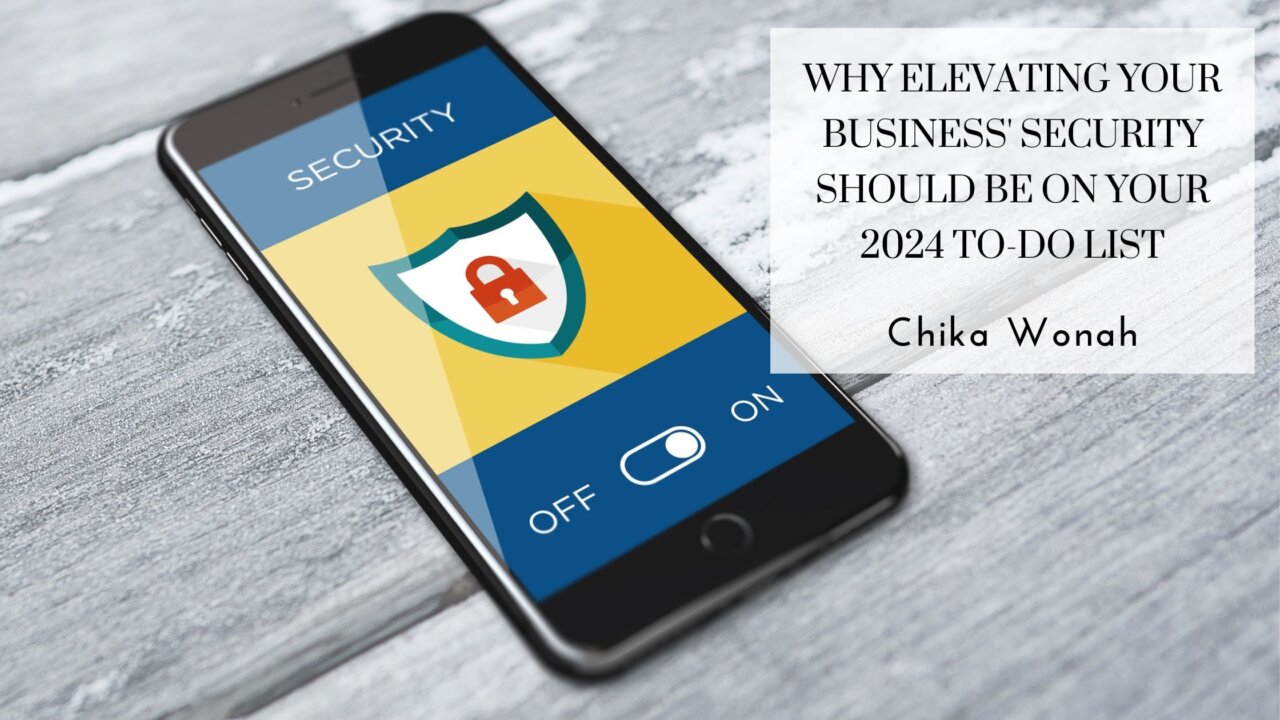As we enter 2024, the digital landscape continues evolving, bringing new challenges and threats to business security. Prioritizing your business’s security is not just a precaution; it’s a necessity. Cybersecurity breaches can have devastating consequences, from financial loss to reputational damage. Therefore, making security a top agenda in your 2024 business plan is crucial.
The background of the current cybersecurity landscape is a tapestry of increasing complexity and sophistication in cyber threats. As businesses undergo digital transformation, they become more vulnerable to cyber-attacks. Cloud computing and remote work models have expanded the attack surface for cybercriminals. Data breaches, ransomware attacks, and phishing scams are becoming more common and sophisticated.
The regulatory environment is tightening, with laws like the California Consumer Privacy Act imposing hefty fines for data breaches. This regulatory landscape makes protecting data and ensuring compliance with evolving laws imperative.
Moreover, the reputational damage following a security breach can be catastrophic. Customers lose trust in firms that fail to secure data, leading to significant business losses. In this context, enhancing cybersecurity is not just about protecting data; it’s about maintaining customer trust and complying with regulatory standards.
Increasing Cyber Threats
The first and foremost reason to prioritize business security in 2024 is cyber threats’ escalating magnitude and sophistication. Cybercriminals consistently devise new methods to exploit vulnerabilities in business systems. Ransomware, where attackers lock businesses out of their systems and demand a ransom, is rising. These attacks can halt business operations, leading to significant financial losses.
Phishing attacks, where attackers trick employees into revealing sensitive information, are becoming more sophisticated. Attackers now use social engineering and personalized communication to make their scams more convincing. The rise of deepfake technology poses a new threat, with the potential to create compelling fake audio or video to deceive employees or customers.
Moreover, as businesses increasingly adopt IoT devices, these devices become new targets for cyberattacks. Many IoT devices have weak security, making them targets for hackers.
Regulatory Compliance and Customer Trust
In 2024, compliance with data protection regulations and maintaining customer trust are crucial reasons for enhancing business security. Regulations like GDPR and CCPA mandate strict data protection practices and impose penalties for non-compliance. These regulations require businesses to ensure data security, report breaches promptly, and uphold data subjects’ rights. Non-compliance can lead to significant fines, legal repercussions, and damage to reputation.
Customer trust is another pivotal factor. Customers tend to patronize businesses they trust to protect their data. A security breach can erode this trust overnight. Once lost, rebuilding customer confidence is a challenging and lengthy process.
Additionally, investors and stakeholders are becoming more concerned about cybersecurity. A strong security posture can make a business more attractive to investors, indicating a lower risk profile and a commitment to long-term sustainability.
Technological Advancements and Security
As businesses adopt new technologies like cloud computing and machine learning, they must address unique security challenges.
While offering scalability and efficiency, cloud computing also introduces risks like data breaches and insecure APIs. Businesses must ensure their cloud environments are as secure as their on-premises systems.
AI and machine learning are being used to automate and improve security systems, but cybercriminals can also use them to launch sophisticated attacks. Businesses must continuously update protocols and train employees on the latest security best practices.
Moreover, as remote work becomes more common, businesses must secure their networks and ensure that remote access is as secure as in-office access. This includes implementing secure VPNs, using multi-factor authentication, and ensuring that employees’ home networks are secure.
